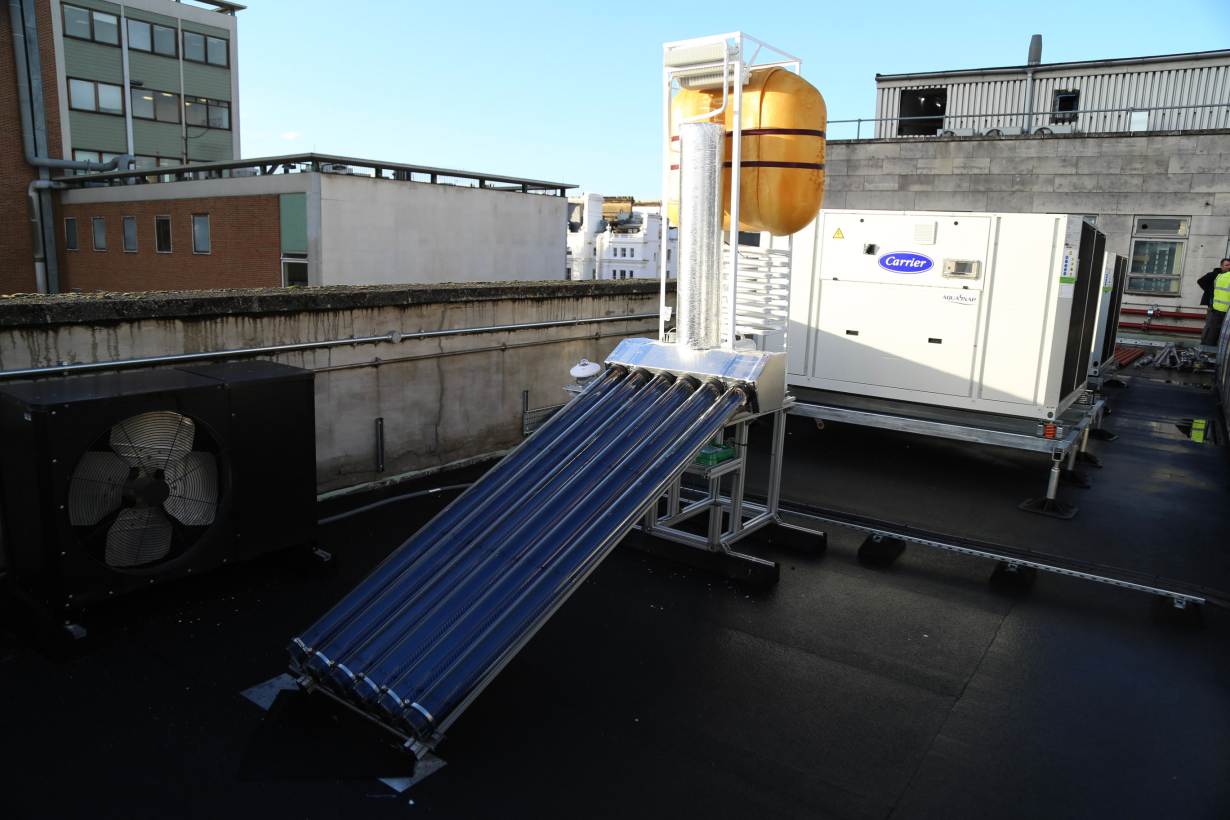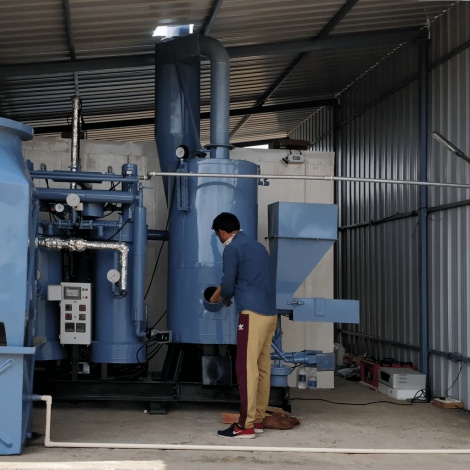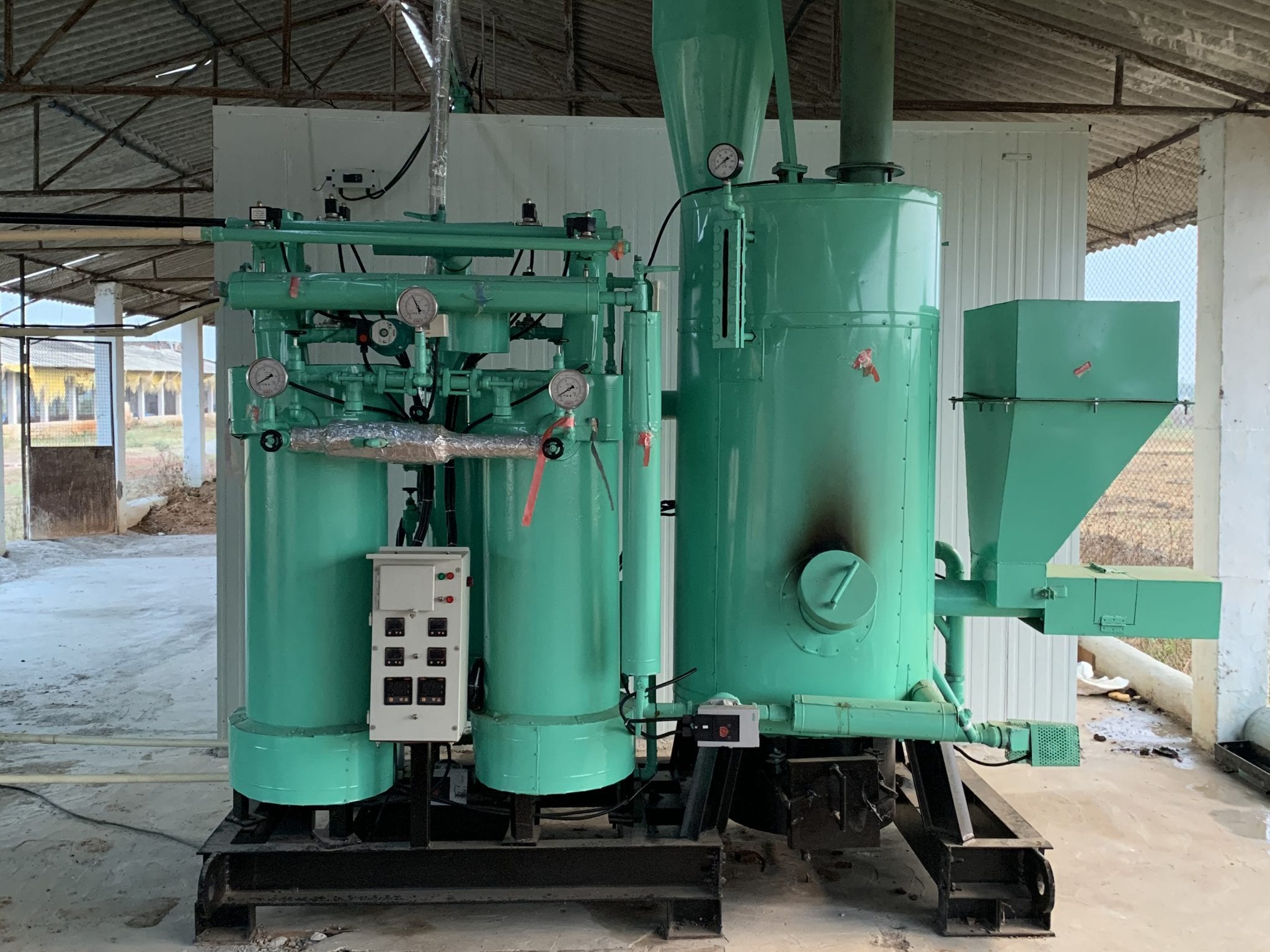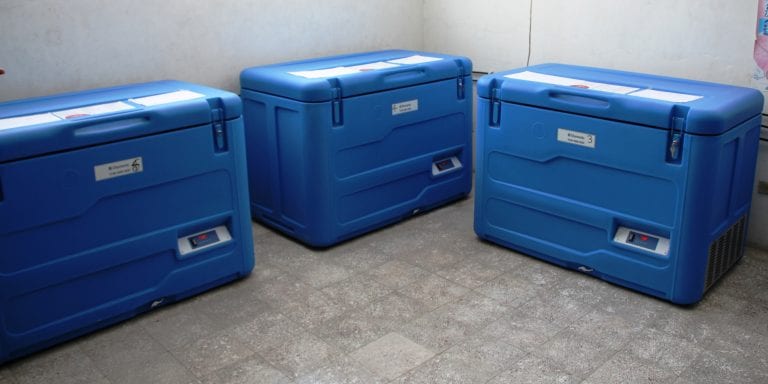
A Burmese man delivers ice around Yangon, Myamar. The Engineers Without Borders – USA Chill Challenge incentivizes new designs for extremely affordable technology to improve refrigeration in underserved communities. Photo courtesy of the author
Draft animals and wood fires count among the power sources for new, extremely low-cost technology proposed in a worldwide design contest for off-grid refrigeration. In September of 2019, the non-profit organization Engineers Without Borders USA (EWB-USA) issued the Chill Challenge, soliciting proposals to develop proof-of-concept prototypes for refrigerators and ice makers. The call received 43 proposals from 36 teams representing universities, companies, NGOs, and individuals across the globe. Seven were selected for grants totaling $300,000 for research and development.
“Affordable refrigeration in off-grid communities will be more than a cool drink. It will, in a small way, change the world because of wider benefits such as improved nutrition and education,” said Larry Bentley, who along with F. Andrew Dowdy, is spearheading the challenge on behalf of EWB-USA, with support from an Open Philanthropy grant.
Through their work in off-grid communities, Mr. Dowdy and Mr. Bentley realized that refrigeration was a difficult challenge. Access to refrigeration is key to a number of the UN’s Sustainable Development Goals. Refrigeration contributes to health and nutrition, provides economic opportunities for farmers and businesses, and reduces the burden on women. However, it remains scarce in many economically developing regions. There may be as many 2 billion people on the planet without access.
Part of the problem may be that traditional refrigerators are power hogs. In the global West, the appliances count among the top five energy consumers in the home. In underserved communities, electricity from a central grid can be spotty, and home systems can typically handle only small loads. Solar home systems are increasingly common, providing light and TV and charging phones. Refrigeration, however, is a much more energy-intensive process, and has proved to be a bigger hurdle.
There have been several initiatives to develop efficient off-grid refrigerators, including the Global LEAP Awards by the Efficiency for Access Coalition. The Chill Challenge is intended to complement those efforts, with a slightly different approach to the problem.
First, its focus is affordability. The competition target costs are well below existing refrigeration options, using energy sources typically available to off-grid communities.
Second, is the inclusion of community sources of refrigeration. Rather than smaller household refrigerators, the challenge has solicited proposals for either a larger (150-250 liter) fridge or a community-sized (100-1000 kg/day) icemaker. The fridge is sized to be suitable for small commercial applications, such as shops or bars, which tend to be the earliest adopters of refrigeration. Similarly, the icemaker could provide a very flexible source of refrigeration for households or various income producing activities.
Finally, the initiative is not limited to vapor compression refrigeration. The Chill Challenge is open to all cooling technologies, including thermally driven processes. Design parameters can be found on EWB-USA’s site at Chill Challenge Detailed Design Parameters.
The seven grants, ranging from $30,000-50,000, represent a mix of refrigeration technologies, including vapor compression, thermal sorption and sky radiant cooling. The range of ideas submitted impressed the judging panel. “It was really difficult to select only a handful of proposals for grants,” Mr. Dowdy says.
Technologies Represented In The Challenge
Vapor Compression
Vapor compression refrigeration, powered by solar PV panels, is the most widespread off-grid refrigeration technology in use today. However, it is difficult to meet the Chill Challenge affordability targets using this technology. The two vapor compression proposals receiving grants are for ice makers, which offer certain economies of scale over refrigerators, and can address “dark day” challenges by storing ice, rather than using battery storage.
- Solar Cooling Engineering will build an icemaker using five of its SelfChill® cooling units powered by solar PV. These are DC direct drive vapor compression units using R-600a (isobutane) as a refrigerant with low global warming potential (GWP). A key to affordability is to combine these units with locally produced refrigeration cabinets to provide flexible, lower-cost refrigeration options. The unit will use a smartphone connection for monitoring and will be enabled for pay-go financing.
- Purdue University proposes to offset the cost of an icemaker by using a combined heating and cooling vapor compression system to make ice and to dry crops. The unit will make 100-150 kg of ice/day, using R-290 (propane) as a low GWP refrigerant and solar PV as an energy source. The research will evaluate food drying and storage practices, including their prices and seasonality. Potential applications of the technology will then focus on locations that produce food items that command high value and/or are available throughout the year.
Solar Thermal Sorption
Solar refrigeration, using sorption processes, has been investigated for many years, but commercial success has been elusive. A big challenge is that the coefficient of performance (COP) for thermal sorption systems is well below that of vapor compression systems. The low COP’s of thermal systems, combined with the falling cost of solar PV panels has favored vapor compression systems for off-grid applications. However, the costs of evacuated-tube solar collectors have also fallen rapidly. Furthermore, thermal systems may be able to address “dark-day” contingencies by storing hot water, which could prove cheaper than battery storage required for vapor compression.
- Xergy Corporation will build an adsorption refrigerator, driven by solar thermal energy, that uses hydrogen and metal hydrides as the working pair. The unit will employ an advanced heat exchanger design, which the company believes will result in an efficiency of 70%. If successful, the team believes the refrigerator would provide a simple, easy to maintain solution for remote off-grid communities.
- Imperial College London proposes to use hot water from solar collectors to drive a diffusion absorption refrigeration (DAR) process. The basic process, used for decades in propane and kerosene refrigerators, has proved to be simple and reliable with no moving parts, but COP’s, using ammonia and water as the working pair, are typically 0.2 or less. The team expects to significantly improve performance by using alternative working fluid pairs and optimized unit design.

A team from Imperial College London proposes to drive a refrigerator using hot water from solar radiation collectors like these. Photo courtesy of the author
Biomass Thermal Sorption
On paper, sorption systems using biomass should be quite affordable. Biomass, in the form of fuel wood or charcoal, is widely available for cooking in off-grid communities, and is an extraordinarily cheap source of thermal energy which should make it affordable even for processes with relatively low COP’s.
- Purdue University proposes to test a “Cold Storage Battery” driven by heat from a cook stove. This is essentially an intermittent adsorption refrigeration system – a heat source will generate the refrigerant, which can be discharged at a later time to provide cooling on demand. While the unit will be designed to be used alongside cook stoves, other thermal sources could be used.
- New Leaf Dynamic Technologies will use its GreenCHILLTM technology to build a 1000 kg/day ice-maker that can be powered by any number of biomass sources. This is an adsorption system, using R-717 (ammonia), that the company has already deployed in more than 25 locations in India. The system will need an estimated 105 kg of wood equivalent biomass per day to produce 1000 kg of ice and will use electrical power, provided by solar PV, to run auxiliary equipment.
Sky Radiant Cooling
“Night sky radiation” is a well-known phenomenon that was used by ancient Persians to produce ice, and was tested in “roof-pond” houses in the 1970s for residential cooling. In recent years, researchers have developed surfaces that enhance this effect by radiating heat at infrared wavelengths that can pass through the atmospheric window into space. At the same time, the surfaces are highly reflective of sunlight which allows them to maintain temperatures below ambient while exposed to full sun.
- Arup Engineering proposes to build a completely passive cooling box using this phenomenon for cooling and using phase change materials for cold storage. If successful, this could lead to the development of a refrigerator that operates without electricity or refrigerant, a simple and inexpensive cooling solution for many communities in the developing world.
Next Steps for the Teams
The grantees develop prototypes and test them for the remainder of the year. EWB-USA expects final research results to be available in the first quarter of 2021. The event’s leadership views this prototype development phase as the first step in a longer process to bring affordable, off-grid refrigeration solutions to developing countries. If viable technologies are demonstrated, the organization intends to solicit funding to support further development and marketing.
“Successful solutions to our Chill Challenge will be a game-changer for millions of people and we are extremely proud to be catalyzing new ideas and inspiring out of the box thinking on this vital development tool,” says Cathy Leslie, CEO of EWB-USA.
For more information, please see www.ewb-usa.org/chill-challenge.
About the Authors
F. Andrew Dowdy is a retired foreign service officer and engineer, now working on energy access, innovation and historical research.
Christine Broda-Bahm is Senior Writer at Engineers Without Borders – USA.



Hi Andrew and Christine, I saw in this article the simultaneous use of the heat and cold from condensor and evaporator in a chiller. I was developing a prototype for this and even thought about patenting because never saw it applied even if it is so simple. I am new here and don’t regret to see that it exists already, I can only be relieved to see that both sides of the system are used, which gives approx a doubling of the efficiency. I would like to know more about it and where I can find small water/water heat pumps of one or a few kW electric consumption so that I don’t have to open air conditioner and bend the fragile copper piping.
It was nice to see that the application was in “industry” (drying and cooling food). I imagine which kind of users might benefit from it, too: hospitals, hotels, municipalities that need heat and cold at the same time for many months. These users are in a good position to save a lot of energy. If water/water heat pumps are used, thermal storage becomes possible, which is much safer and cheaper than batteries.
I am looking forward to your reply.
Norbert N. Vasen
Norbert, Thanks for the question. The various teams finished their work last year, and you can find a paper on the results here: https://www.ewb-usa.org/wp-content/uploads/Chill-Challenge-Final-Report-031322.pdf
The simultaneous cooling and drying research was carried out at Purdue. Although they were able to achieve both with one unit using a variable valve, a downside is that there are efficiency concerns. For example, if you are running the condenser at high enough temperatures for drying, you reduce the coefficient of performance of the refrigeration process. In my view, there might be specific applications where you need drying on one occasion and cooling on another, or applications needing cooling and process heat simultaneously. For off-grid applications that use solar PV as a power source, however, a technnology such as this would have to be competitive with simple solar drying. I’m happy to provide more info, if needed. Thanks for your interest. Andrew